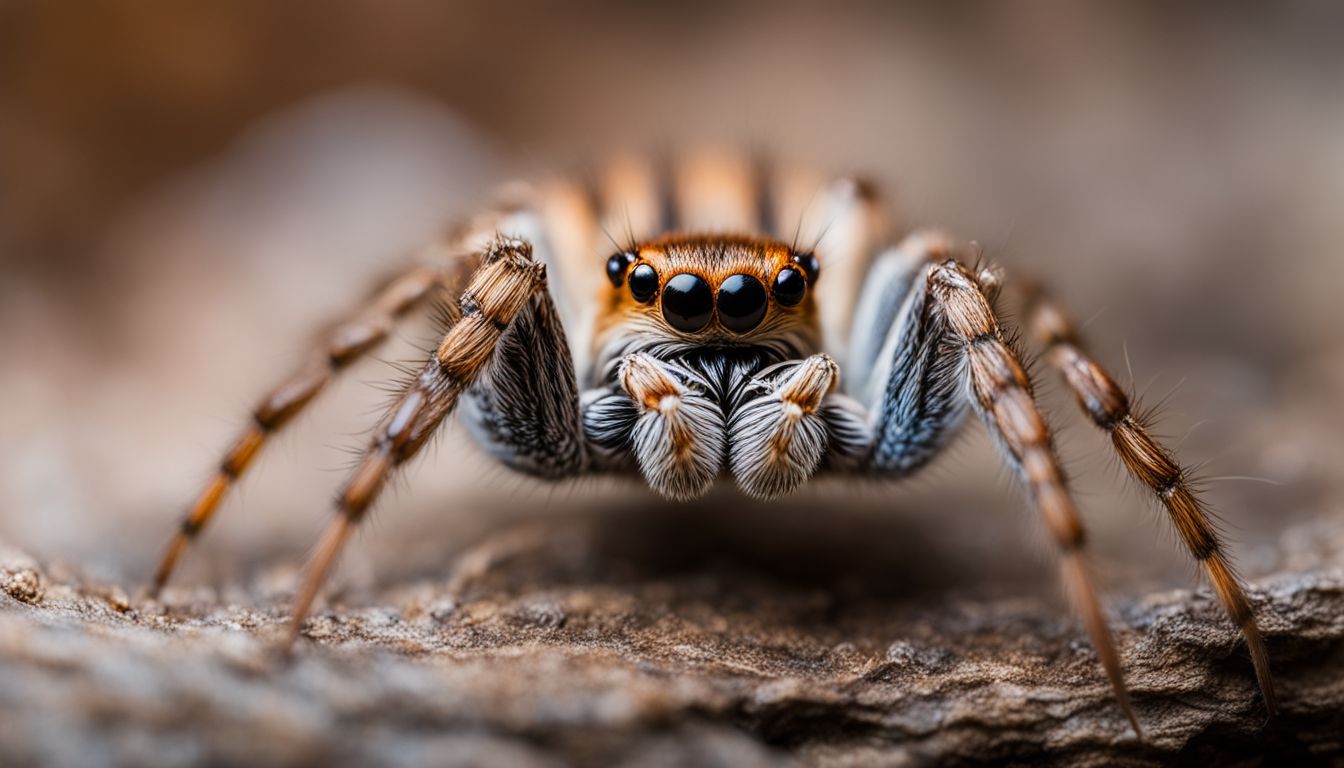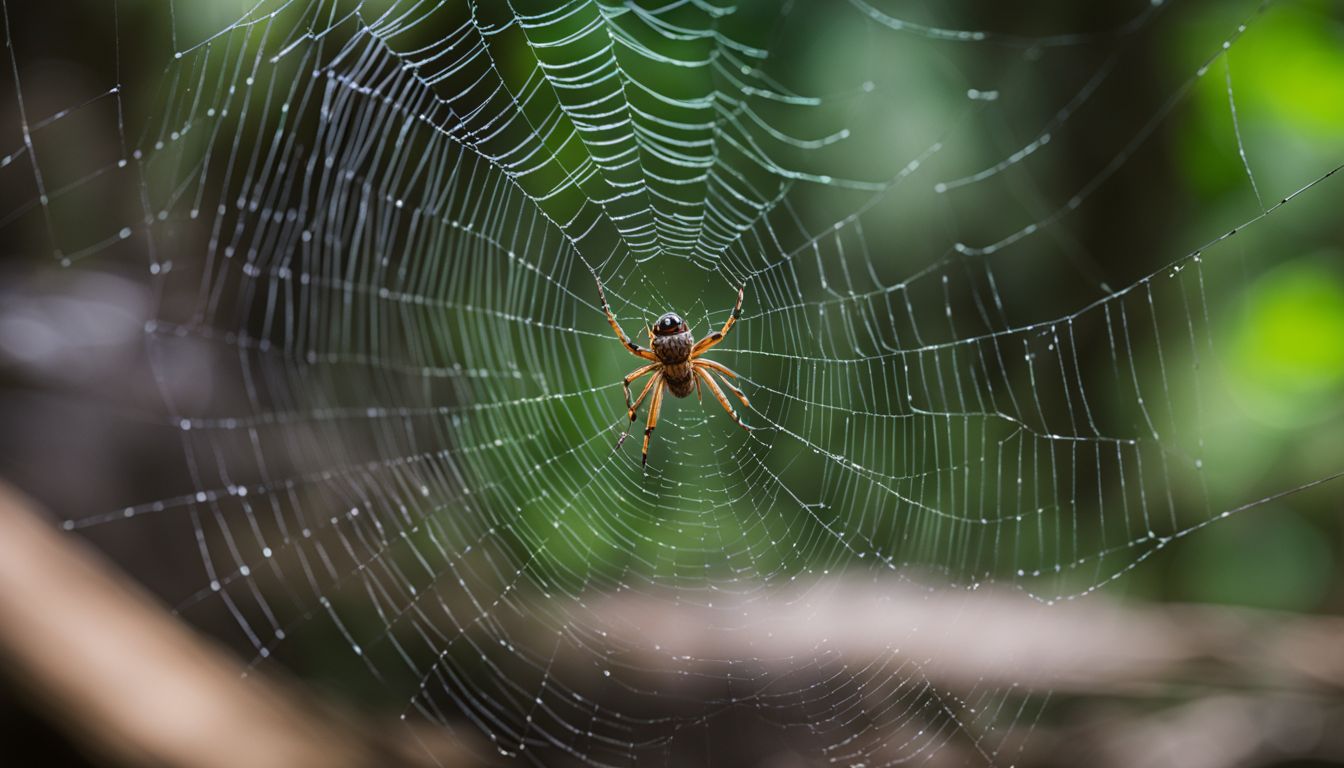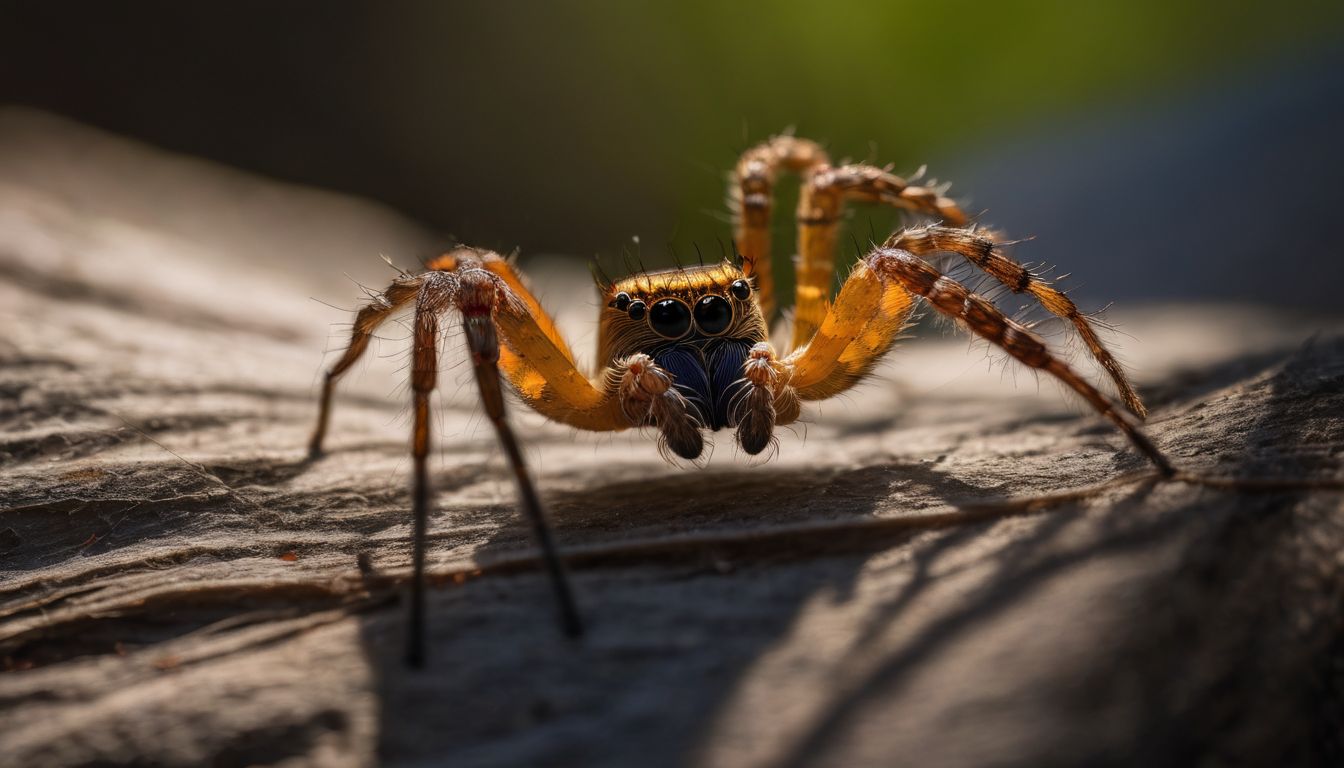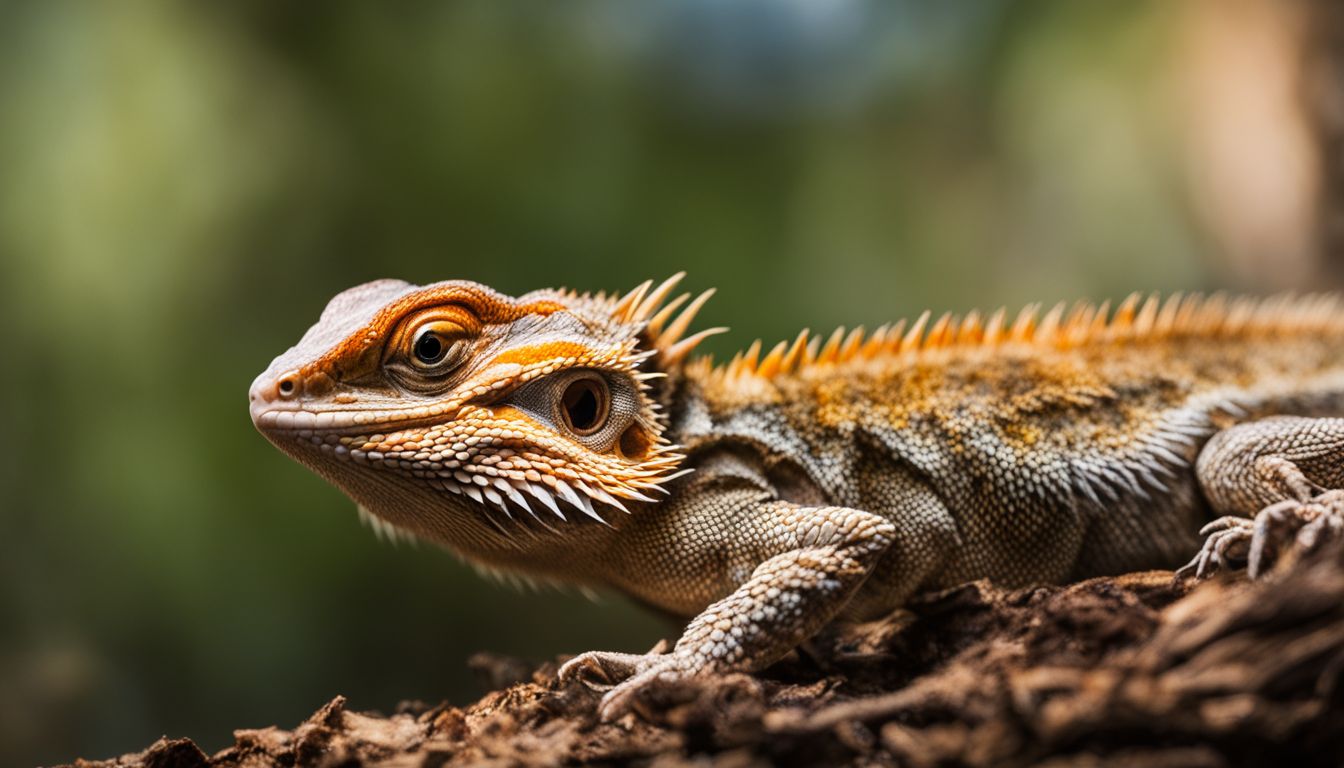Have you ever wondered if the spiders lurking in corners have powers like comic book heroes? Unlike Spider-Man, real spiders don’t have a ‘spidey-sense’ to detect danger from miles away.
However, our blog post will reveal how these tiny creatures do possess amazing sensing abilities to navigate their world. Get ready for some fascinating facts that’ll make you see spiders in a whole new light!
Key Takeaways
- Real spiders don’t have a superhero-like ‘spider sense’ similar to Spider-Man but possess remarkable sensory abilities to detect vibrations and sound waves.
- Spiders rely on their acute sensitivity to environmental cues, using tactile hairs and web vibrations to navigate their world, detect prey, and perceive potential threats.
- While not possessing a sixth sense like the fictional character Spider – Man, spiders’ extraordinary sensory perception showcases their unique ability to understand and interact with their surroundings in ways that surpass human capabilities.
Unraveling the Myth: Spider Sense vs. Science Fiction

The inspiration behind Spider-Man’s spidey sense stems from the realm of science fiction, but do real spiders have a sixth sense? Let’s take a closer look at the reality of spider senses and how they compare to their fictional counterpart.
The Inspiration Behind Spider-Man’s Spidey Sense
Spider-Man has a special power called spidey-sense. This power lets him feel danger before it happens, like getting an early warning sign in his head. Stan Lee and Steve Ditko created this idea when they made Spider-Man.
They imagined what it would be like if someone had the same sharp senses as a spider.
Spiders in real life can pick up tiny changes around them using their webs and bodies. That’s how they know when something is coming their way or when to catch prey. The cool thing about Peter Parker, who becomes Spider-Man after a radioactive spider bites him, is that he gets these amazing sensing abilities too!
Now let’s look at how spiders sense the world around them.
Reality Check: Do Real Spiders Have a Sixth Sense?
So, while the story of Spider-Man dazzles us with spidey-senses that tingle in the face of danger, let’s see what real spiders can do. Spiders don’t have a special sixth sense like Spider-Man does.
But they are still amazing creatures! They feel around their world using hairs all over their bodies. These hairs pick up on tiny movements and vibrations that tell the spider about what’s happening near them.
For instance, some spiders can tell when dinner lands in their web just by feeling the web shake. Others listen for sounds through the ground or air to know when something is moving close by.
Scientists even found out that spiders might sense sound waves with help from their webs! This isn’t quite like having a superpower, but it sure shows that spiders have very cool ways to check out what’s going on around them without seeing it.
How Spiders Perceive the World

Spiders perceive the world through a combination of vibrations and tactile hairs on their bodies, allowing them to detect prey, predators, and potential mates. Their acute sensitivity to environmental cues plays a crucial role in their survival and communication within their habitats.
The Role of Vibrations and Hairs in Spider Sensory Detection
Hairs on spiders are not just for looks. They have very important jobs, like feeling vibrations and changes in the air. These tiny hairs are connected to nerves that help the spider know what is happening around it.
Some spiders can even tell when insects fly by, all thanks to these special leg hairs.
Their world lights up with every little shake or movement that these hairs pick up. Jumping spiders are really good at this because they have extra sensitive hairs all over their bodies.
This helps them be great hunters! Knowing about how spiders use vibrations and hair can lead us into exploring more about how they react to different things in their environment.
Spiders’ Acute Sensitivity to Environmental Cues
Spiders have a super-sensitive system that helps them understand the world. They can sense vibrations from their environment with great accuracy. This ability allows them to tell apart prey from other things around them.
Some spiders, like jumping spiders, rely on keen vision to find their way, while others depend on mechanical senses for guidance. Spiders’ extraordinary sensitivity to vibrations puts them at second place among creatures known for picking up on these cues.
This incredible sensory perception showcases just how remarkable spiders are when it comes to understanding their surroundings and finding what they need in the wild. Their acute sensitivity is truly fascinating and offers insight into the depth of their abilities.
Do Spiders Feel Pain?? Exploring Spiders’ Sensory Abilities and Responses
Spiders don’t have pain receptors like humans do. This means they don’t feel pain the same way we do. Their primitive form of pain perception is more about sensing injuries rather than experiencing actual pain.
So, when a spider gets hurt, it knows something’s wrong, but it doesn’t suffer in the way humans or other animals with more complex nervous systems might.
Understanding how spiders perceive their world can help us appreciate their unique sensory abilities and responses.
Scientific Insights into Spiders’ Sensory Abilities
Scientists have conducted research on spiders’ detection of sound waves and their ability to communicate through vibrations. These studies provide valuable insights into the sensory capabilities of spiders and how they perceive the world around them.
Research on Spiders’ Detection of Sound Waves
Spiders can detect sound waves without having ears. Some studies suggest that spiders use their webs as acoustic instruments to pick up vibrations from the air. For instance, orb-weaving spiders are able to sense distant airborne sounds by using their webs as an antenna.
Additionally, certain species of spiders have sensory organs on their legs that allow them to detect movements and vibrations, providing further evidence of their extraordinary sensory abilities.
Ogre-faced spiders stand out due to their remarkable hearing capabilities, being able to perceive a wide range of sounds from over six feet away through the sensory organs on their legs.
Understanding Spiders’ Communication Through Vibrations
Having decoded spiders’ keen detection of sound waves, it’s fascinating to delve into how they communicate through vibrations. Spiders utilize substrate vibrations not only for communication but also as a means for prey detection.
They can amplify their sensory abilities by feeling changes and vibrations against their webs, which helps them in detecting prey entangled in their intricate silk threads. Their sensitive hairs play a critical role in this; these hairs detect the tiniest of vibrations, making spiders remarkably attuned to their environment and those within it.
In fact, studies have shown that spiders are incredibly sensitive to vibrations; they rank as the second most vibration-sensitive creatures on our planet.
Comparing Spider Senses to Human Perception
Spiders’ sensory capabilities far exceed those of humans, especially when it comes to detecting vibrations and environmental cues. While humans may not be able to develop a spider-like sense, studying spiders can provide valuable insights into the limits of human perception.
Can Humans Develop a Spider-Like Sense?
Humans may possess the potential to develop a spider-like sense, as suggested by a study indicating an innate ability similar to that of spiders. This implies that humans might have the capability to cultivate a comparable sensory system, potentially granting them heightened awareness of their surroundings and potential dangers.
The widespread interest in real-life spidey senses and inquiries about its existence suggests an intrigue in the possibility of humans developing such an extraordinary ability.
Research into spiders’ sensory abilities provides insights into how humans could develop enhanced perception akin to a spider’s sensory system. By understanding and emulating the mechanisms through which spiders perceive vibrations and environmental cues, it may be plausible for humans to develop a heightened sense capable of detecting imminent threats or changes in their surroundings.
The Limits of Human Sensory Capabilities Compared to Spiders
While humans possess remarkable sensory abilities, they are limited in comparison to spiders. Spiders have thousands of tiny hairs that help them detect even the slightest vibrations in their environment, granting them a superior sense of touch compared to humans.
Additionally, spiders exhibit complex learning processes and behaviors, showcasing their advanced sensory capabilities far beyond human capacity. These fascinating differences highlight the exceptional sensory prowess of spiders, setting them apart from human sensory systems.
Spiders’ heightened sensitivity to environmental cues and their ability to perceive minute vibrations through tactile hairs give them a sensory advantage over humans. This allows spiders to navigate and interact with their surroundings in ways that surpass human capabilities.
Conclusion
In conclusion, real spiders don’t have a superhero-like spider sense. Instead, they rely on their acute sensitivity to vibrations and sound waves to navigate their world and detect potential threats.
Although they may not have a sixth sense like Spider-Man, spiders possess remarkable sensory abilities that help them survive and thrive in their environment. So next time you see a spider, remember their extraordinary natural senses are more fascinating than any fictional superpower.
If you’re curious about the intricacies of spiders’ sensory experiences and whether they feel pain, delve deeper by reading our fascinating article “Do Spiders Feel Pain? Exploring the Sensory World of Arachnids.”
FAQs
1. What is spider sense in the Spider-Man movies?
In Spider-Man movies, like “Spider-Man: Homecoming” and “Spider-Man: Far From Home,” spider sense is a special power that helps Spider-Man feel danger before it happens.
2. Do real spiders have a spider sense?
Real spiders don’t have spider sense like Spider-Man. However, some can feel vibrations through their webs which warns them of danger or meals.
3. Can any real spiders jump like they do in movies?
Yes! Jumping spiders from the Salticidae family are really good at leaping when hunting or avoiding threats.
4. Why does my skin get goosebumps when I see spiders similar to how Gwen Stacy might react in the comics?
Goosebumps happen because of an automatic reaction from your body when you’re scared, just as someone might be surprised seeing villains like Doc Ock or The Lizard in comic stories.
5. Are there any real-life superheroes named after animals besides Spider-Woman and Captain America?
Captain America isn’t named after an animal but we have Winter Soldier and others who take names inspired by creatures; however, these are all fictional characters made for exciting stories.




